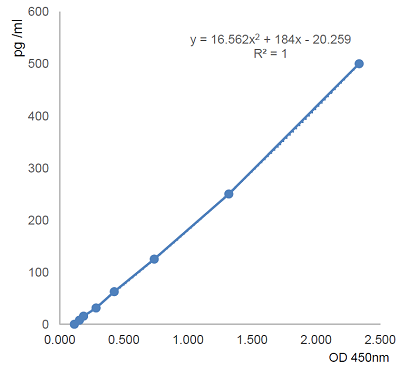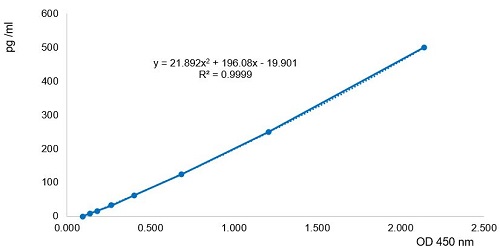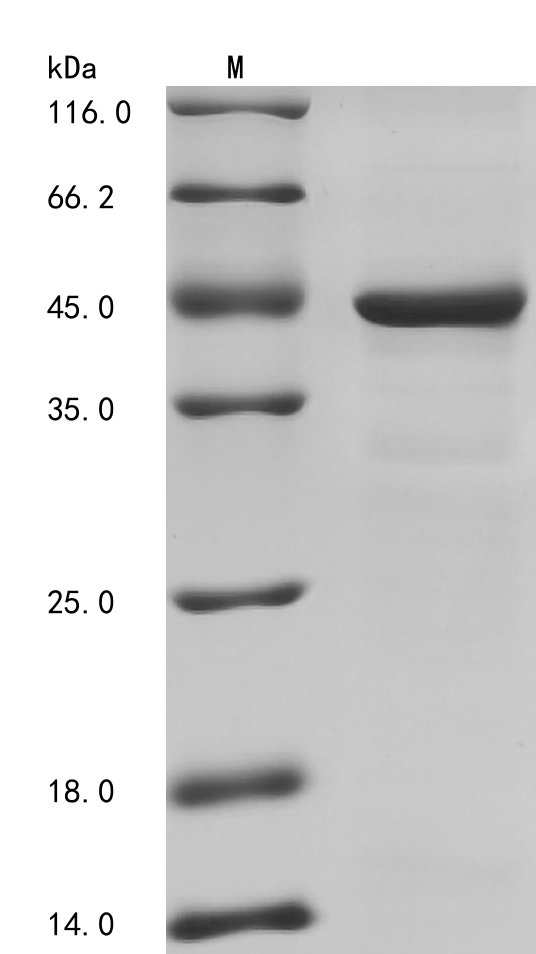FGL1 (human) (rec.) (His)
AG-40B-0186
Protein IDQ08830
Product group Proteins / Signaling Molecules
Overview
- SupplierAdipoGen Life Sciences
- Product NameFGL1 (human) (rec.) (His)
- Delivery Days Customer10
- CertificationResearch Use Only
- Concentration0.1 mg/ml
- Estimated Purity>95%
- Protein IDQ08830
- Protein NameFibrinogen-like protein 1
- Scientific DescriptionFGL1 (Fibrinogen-like protein 1, also called Hepatocyte-derived fibrinogen-related protein 1, HFREP-1 or Hepassocin) was initially identified as an overexpressed transcript in hepatocyte carcinoma and as a transcript enriched in regenerating liver. FGL1 is expressed at lower levels in brown and white adipose in the setting of liver injury. A low level expression of FGL1 is also observed in the pancreas. FGL1 is a 34kDa protein structurally similar to Angiopoietin-like factors 2, 3, 4 and 6, which regulate lipid metabolism and energy utilization. It was proposed that FGL1 is a member of an emerging group of proteins having potential roles in liver metabolism and liver regeneration. Recently, FGL1 has also been shown to be upregulated in human cancers and FGL1 is a major functional ligand of LAG-3. FGL1 interacts with LAG-3 in a MHC-II-independent manner and this interaction involves the FGL1 fibrinogen-like domain and the LAG-3 D1-D2 domain. FGL1-LAG-3 interaction blockade promotes tumor immunity by stimulating T cell expansion and activation. FGL1 forms two disulfide-linked homodimers and also higher molecular weight homooligomers that bind to LAG-3 much better than the dimeric forms. This binding to LAG-3 inhibits T cell responses. The recombinant fusion protein Fc (human):FGL1 (human) (FGL1-Ig) has been shown to function as an efficient ligand of LAG-3. - Recombinant Protein. Human FGL1 (aa 23-312) is fused at the C-terminus to a His-Tag. Should activate human LAG-3 (activity test not yet performed). Source/Host: HEK 293 cells. Endotoxin: <0.01EU/microg purified protein (LAL test; Lonza). Lyophilized. Contains PBS. FGL1 (Fibrinogen-like protein 1, also called Hepatocyte-derived fibrinogen-related protein 1, HFREP-1 or Hepassocin) was initially identified as an overexpressed transcript in hepatocyte carcinoma and as a transcript enriched in regenerating liver. FGL1 is expressed at lower levels in brown and white adipose in the setting of liver injury. A low level expression of FGL1 is also observed in the pancreas. FGL1 is a 34kDa protein structurally similar to Angiopoietin-like factors 2, 3, 4 and 6, which regulate lipid metabolism and energy utilization. It was proposed that FGL1 is a member of an emerging group of proteins having potential roles in liver metabolism and liver regeneration. Recently, FGL1 has also been shown to be upregulated in human cancers and FGL1 is a major functional ligand of LAG-3. FGL1 interacts with LAG-3 in a MHC-II-independent manner and this interaction involves the FGL1 fibrinogen-like domain and the LAG-3 D1-D2 domain. FGL1-LAG-3 interaction blockade promotes tumor immunity by stimulating T cell expansion and activation. FGL1 forms two disulfide-linked homodimers and also higher molecular weight homooligomers that bind to LAG-3 much better than the dimeric forms. This binding to LAG-3 inhibits T cell responses. The recombinant fusion protein Fc (human):FGL1 (human) (FGL1-Ig) has been shown to function as an efficient ligand of LAG-3.
- Storage Instruction-20°C,2°C to 8°C
- UNSPSC12352202



